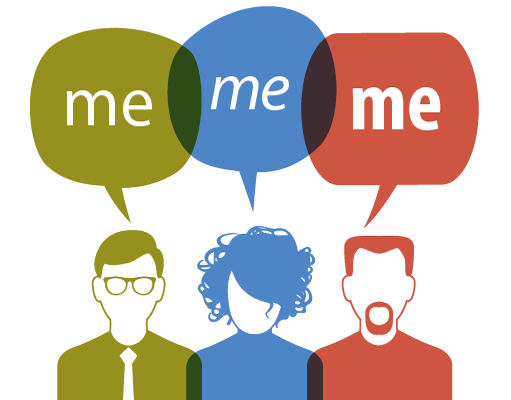Do you wonder why social media usage and texting is chewing up smartphone screen time? Why the hottest tech trends are wearables, self-driving cars and virtual reality? Why sales of selfie sticks and hoverboards are on the upswing? Does this look like a pattern to you? It does to me because, more and more, it seems…“it’s all about ME!”
Personalized social networks, individualized activity trackers (and even home networking and transportation devices) are now putting even more power into the hands of the consumer and shifting the balance of power with brands. And with the advent of mobile (smartphones, apps) and “the cloud”, we seem to have reached the inflexion point with digital technologies now invading all industries and lifestyles. That means trackable data and more…personalization is coming. The combination of these powerful trends is changing the way we do business and brand relationships with consumers in important new ways.
A PERSONALIZED USER UNIVERSE
Do you get as annoyed as I do when I have to upgrade to a new device? Reset everything. Reload everything? Your unique list of contacts, downloaded apps and music, message history have created a personalized virtual world you carry around with you 24/7 which you are more and more dependent on. The smartphone has moved from a functional device to an essential and very personal one in our digitally-tethered world. The ability of brands to shift their priorities to a mobile consumer began with the advent of apps which users could select to download and use to meet their individual needs. But where will this user defined universe evolve to? As brands redefine the customer journey around their products to be defined in terms of better customer outcomes instead of around product sales, mobile and digital technologies will be a critical part of this new service-based ecosystem spinning around each of us.
THE SEARCH LANDSCAPE REWARDS THOSE WHO SERVICE USERS BETTER
It’s 2016, a new year, and the latest Google algorithm update shows that user engagement is becoming a more and more important factor in organic search ranking. Whether your page loads fast enough for the user, gets the user’s click, whether the user stays on the site once there (and for how long), all increasingly matter to Google when deciding whether your page “ranks” for a search.
Nowhere is the trend toward increased emphasis on user intent more evident than in the world of search. We’re all familiar with how Adwords quality scores uses users’ click through behavior to determine quality scores and how frequently your ad gets shown, but organic search is also being impacted by the user intent trend. Consumers now use social search (word of mouth recommendations from friends and family = POWERFUL) and apps instead of organic keyword searches more and more. And with platforms like Facebook broadening to embrace reposting of 3rd party content (videos, Instant Articles for example), the need for a consumer to travel out to a search engine for this content continues to decline. Have you noticed how much better your Facebook-hosted video ranks in their newsfeed vs one syndicated in from YouTube? Hmmm… Google doesn’t make searchers even travel to search results pages now but simply answers selected queries using instant answers or “in-results” features like Google flight search and hotel finder.
The advent of content recommendation engines (see Pocket’s latest advance, Snapzu and Nuzzel), will further expand the search landscape to new players who aggregate and index content for your “slicing and dicing” viewing pleasure. The old world of search optimizing content for keywords “and they will come” is fading fast. How are brands going to navigate this new complex world of multiple search channels, navigation constructs, and features? How do brands get found in a fragmented landscape where you have lost leverage with the decline of keyword-based search? What’s AFTER content marketing?
USER AD BLOCKING GOES MAINSTREAM
Layer on top of this the latest data on ad blocking by consumers. We knew millenials hated ads and now ad blocking has grown from roughly 21 million users in 2009, according to a recent Adobe/PageFair report, to 198 million active global users as of June 2015 with 45 million (18% of ComScore’s 250 internet/PC users) of these in the U.S. Ad blocking among U.S. consumers increased by 48% between June 2014 and June 2015 according to the Adobe/PageFair analysis. What are the implications for brand marketing when advertising doesn’t work? Will paid search and social media signals takeover as the main source of brand reach as well as influence? What will happen to business models of technology unicorns like Facebook, Instagram and Twitter if ad blocking goes mainstream?

